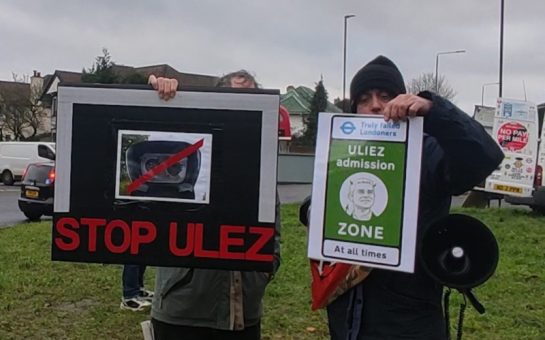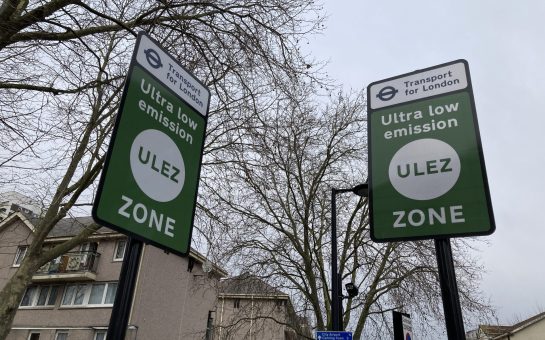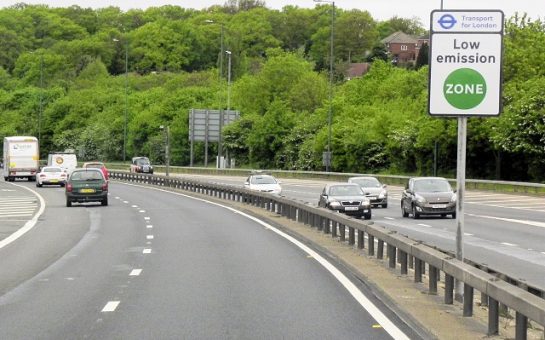![]() By Georgia Simcox
By Georgia Simcox
January 22 2020, 11.00
Follow @SW_Londoner
Air pollutants in London’s congestion charge zone have decreased by up to 62% since the charge was introduced in 2003.
Data collected by Select Car Leasing from DEFRA UK air quality monitoring sites, show carbon monoxide levels are 62% lower while sulphur dioxide levels have decreased by 60% and nitrogen dioxide levels by 24%.
When the charge was first introduced, it promised to lower emissions and increase London’s air quality.
Select Car Leasing director Mark Tongue said: “Our research has shown that although Low Emission Zones (LEZ’s) tend to gain a negative press due to their financial implications for the public, they do work, it can take time to see an improvement in air quality as the benefits of the LEZ begin to take effect.”
He added: “LEZ’s are essential across the UK to improve the air quality of our busy cities.
“They will also make regular commuters in the area more likely to opt for an electric car as they are exempt from charges, which in turn is better for the environment.”
While recognising the success of the congestion charge zone, Mr Tongue said extending it to London’s outer boroughs ‘may be a step too far at the present time’ as there are fewer pedestrians, traffic and cyclists in these boroughs.
Global Action Plan’s head of health Larissa Lockwood said: “I do think that we all have a right to breathe clean air and I think therefore if this is a successful measure which it seems to be then it could be suitable.”
She added: “We know that most of the air pollution in London is coming from vehicles, so the focus does need to be on reducing the number of vehicles on the road so that is both people moving from car travel to more public transport and active travels.
“I think over a third of London’s car journeys are under two kilometres so that could be walked in 25 minutes so there is a large chunk of journeys on the road that arguably are kind of unnecessary.”
Ms Lockwood recognised that, for this to work, more investment in infrastructure was needed to make safe cycle ways and safe pavements.
She explained the congestion charge zone worked well in its current parameter because of the good transport links in the city but she acknowledged this was not the case all over the city.
She said: “If you’re looking at expanding things like the congestion zone then you really do need to invest in good public transport links so people do have an alternative to a car.”
On companies who are still selling diesel cars, she said: “I do think car companies are kind of dodging a bullet at the moment in that there’s so much more that they should be doing.
“Nobody wants to buy a dirty, polluting car. People want to get around but they want a clean vehicle to do it in, so why aren’t they making affordable, cleaner cars?”
Friends of the Earth campaigner for climate, transport and air pollution Jenny Bates said: “We’re still way out of time on meeting limits that should have been met and even those limits aren’t strong enough.
“So while it appears good news – and it is and every little helps – a bigger step change is needed in terms of actions to bring levels down.”
A spokesperson from London City Hall said: “In London we’re implementing some of the boldest plans of any cities in the world.
“The Ultra Low Emissions Zone (ULEZ) is already having a massive effect, reducing NO2 pollution in the zone by a third, but also reducing traffic by between three and 9%.”
London’s ULEZ will be expanded by October 2021, being bound by the North and South Circular Roads. Vehicles using these roads but not entering the ULEZ won’t face a charge.
Ms Bates added: “We’ve always called for the ULEZ to be London-wide for all vehicles, whereas the mayor is only proposing next year to widen it to the north and south circulars.
“We say that’s not good enough because there are places which would be left in outer London that would still be over the limit.”
Roger Lawson from the Alliance of British Drivers said the low emission zone hasn’t reduced air pollution as the fleet of vehicles has changed since the charge was introduced and thinks the charge should be abolished.
He said: “There isn’t a major problem with air pollution in London. “The mayor’s been scaremongering so he can charge people for driving into London.”
He added: “There are a few minor problems in one or two streets which could be tackled by local things. Otherwise because of the changes to the national laws the air pollution is coming down anyway.”
A lot of health conditions associated with air pollution are from nitrogen dioxide which can cause problems for those with respiratory conditions, causing the onset of asthma in children and triggering and exacerbating asthma symptoms.
There are often spikes in A&E visits on high pollution days and it also can stunt children’s lung development. It is also linked to premature birth and low birth weight.
Nitrogen dioxide causes an inflammation of the lungs’ lining and can reduce immunity to lung infections.
Carbon monoxide is a gas caused by an incomplete combustion process. It has no odour or colour but can be extremely harmful to people, causing headaches and respiratory problems.
Sulphur dioxide comes from a reaction in combustion engines when sulphur reacts in the atmosphere to form fine particles and other pollutants which is a major health risk, particularly to children.




